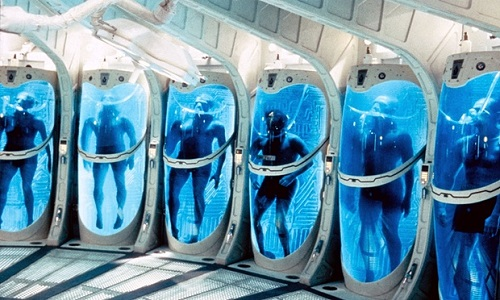Fahrenheit -451
- Shritan Gopu

- Jun 14, 2022
- 4 min read
Updated: Jul 21, 2022
We all know about the famous Captain America. The Captain America who helped save the entire marvel universe in the movie Endgame. This same Captain America has also gone through an incredibly complex medical procedure called cryonics by crashing into ice. Cryonics is indeed the medicine of the future and is believed to have immortal-like properties. Freezing a body in hopes that it can be preserved for the future is the overall goal for doctors and scientists. This procedure is yet to be perfected but is having promising results. However, there remain discussions over the morality of this ‘experiment’. Some believe that exposing this idea to the public could arise with potential problems such as political rights after being re-animated. Others believe that this technology would be revolutionary because it would be able to keep people who have been important in the success of humans more chances in the future.

To decide on why or why not cryonics, we have to first understand what this process even does. Cryotherapy, the basis of cryonics, is an ice treatment that is generally used for treating tumors and is even an instrument used in physical therapy treatments. Cryotherapy treatments usually last between two to five minutes because if someone were to be exposed to -200 degrees Fahrenheit for more than five minutes, their entire nervous system could be impaired. The cold temperature slows down the blood flow in a certain area along with decreasing nerve activities enabling patients to feel less pain for an extended time. After the treatment is over, muscle cells continue to grow while the nerve conductions are still slowed down. This keeps pain reduced while your body continues to rebuild and fix itself. In the case where cryotherapy is used to treat tumors, the cold temperatures freeze off the blood vessels and the tumor falls from the rest of the body.
Since we know how cryotherapy works and when it is used, how can cryonics keep people alive for up to a thousand years? With cold enough temperatures, consistent electricity, and attention to vitals, it is possible to preserve a body for an insanely long amount of time. A freshly dead body is submerged in a chamber where temperatures go below -130 degrees Fahrenheit, entering a state of suspended animation. Suspended animation is when a body’s blood is replaced by another substance and in the case of cryonics, it is a cryoprotective coolant (which does not allow ice to form in the body), to halt any metabolic processes so a body can last up to two hours in cardiac arrest and treated at the same time. Doctors have put human bodies in suspended animation before and results show that brain activity can be regained even after a brain’s neural activity is halted. However side effects include impaired neural capabilities and deficits. As this technique improves, it should be common to see this practice happen in many hospitals with its incredible life-saving capabilities. This is the most vital part of cryonics as without the body going into suspended animation, the blood in a human body would let metabolic processes continue, resulting in bodies to age. Once medical technology has advanced vastly, bodies in cryogenic chambers are to be re-animated.
For many, cryonics is seen as the human race's way to immortality and can be used for humans to start a civilization on other planets. It seems as if only good can come if cryonics is indeed successful. However, just like everything in life, there is a bad side to anything. The ethics of cryonics has been in discussion since the first body was preserved back in 1967. Dr. James Hiram Bedford has been in a cryo chamber for the past fifty years in hopes to be re-animated in the future. Family members throughout these fifty years have been upset by the non-existent resting place of Dr. Bedford. However, even politics can come into play for a dead body. Government officials have put up the question of what rights will the re-animated person have to follow if family members should be able to legally take care of them, and even if they would still be considered a person. The most convincing argument for people that believe that cryonics should not take place is: Should a dead person be allocated medical resources, nutritional resources, and technological resources? Religion is also a key factor for many anti-cryonic believers. For example, in Hinduism, a person’s soul is in the everlasting cycle of reincarnation and if someone is considered dead, the soul should float on into its next life. In Buddhism, a person should not fear death but see it as a good thing and let it happen. In Christianity, a person is given life to cherish and then reunite with God after their passing. The Christian belief is identical to those that believe in Islam and Judaism.
If immortality was indeed to be reached, why would people choose to go with it? Some of the movies or TV shows that we have been exposed to since a young age have shown characters with immortal characteristics. They are shown to be in great despair, pain, lowly, and unenthusiastic. Their pain and sadness are shown in these characters' movements because they do not want to live anymore. They have experienced enough of life and have achieved anything they have wished. Directors of these TV shows and movies do this to show people the cruel side of being immortal and try to get the thought of being immortal out of people’s minds.
The decision to be put in a cryogenic chamber is up to the patient at the end of the day. However, people can choose to discourage it altogether and stop this practice completely. No matter how promising cryonics seems, the negative aspect should always be taken into account. For the overwhelming majority, it should be an easy decision to say that this practice is immoral and should be stopped immediately. For others, the unstoppable feeling of being immortal overwhelms the negative thoughts. But what we know for sure is that cryonics is going to be debated for the next twenty years and will always be the way to go for intergalactic space exploration.



Comments